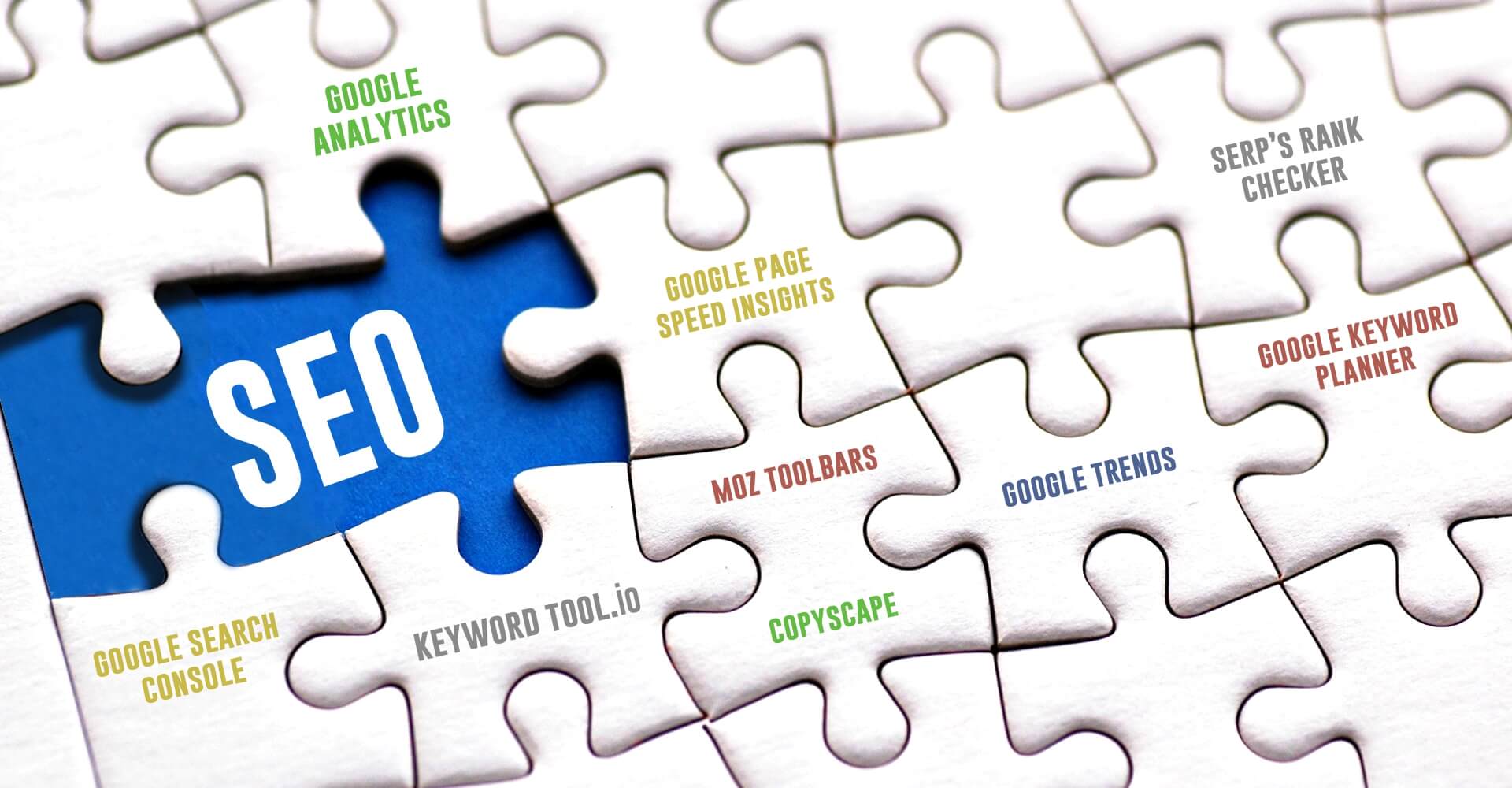Introduction to Search Engine Optimisation

SEO Overview
SEO may target different kinds of searches, including image search, local search, video search, academic search, news search and industry-specific vertical search engines. But keep in mind, your SEO strategy needs to compliment your website design and the User Experience (UX), there needs to be a strong synergy between the two. There's no point having an ugly page that is highly SEO optimised that doesn't convert (large 'text walls' with very few graphical elements are a good example of this) - there needs to be a balance.

The SEO Basics
Create unique, accurate page titles
A title tag tells both users and search engines what the topic of a particular page is. Ideally, you should create a unique title for each page on your site. Choose a title that effectively communicates the topic of the page's content. Each of your pages should ideally have a unique title tag, which helps Google know how the page is distinct from the others on your site. Titles should be both short and informative. If the title is too long, Google will show only a portion of it in the search result.
Make use of the "description" meta tag
A page's description meta tag gives Google and other search engines a summary of what the page is about. Whereas a page's title may be a few words or a phrase, a page's description meta tag might be a sentence or two or a short paragraph. Write a description that would both inform and interest users if they saw your description meta tag as a snippet in a search result. Having a different description meta tag for each page helps both users and search engines, especially in searches where users may bring up multiple pages on your domain (e.g. searches using the site: operator).
Improving Site Structure
Use keywords in the URL.
Simple to understand URLs will convey content information easily. URLs with keywords that are relevant to your site's content and structure are friendlier for visitors navigating your site and better for search engines. Also, visitors remember them better and might be more willing to link to them.
Create a well planned directory structure
Use a directory structure that organizes your content well and makes it easy for visitors to know where they're at on your site. Try using your directory structure to indicate the type of content found at that URL. The closer a page is to the root (i.e. home page) the more weighting this content will have with Google, i.e. a level 5 tiers down has much less relevance to the site Home page.
Provide one version of a URL to reach a document.
To prevent users from linking to one version of a URL and others linking to a different version (this could split the reputation of that content between the URLs), focus on using and referring to one URL in the structure and internal linking of your pages. You can also add a 'canonical' to help Google find the one best page for that keyword/product etc. The more visitors a page has, the more relevance it has to Google, and the longer they engage with that page the better.

Optimizing Content
Offer quality content and services
Write easy-to-read text. Users enjoy content that is well written and easy to follow.
Stay organized around the topic. It's always beneficial to organize your content so that visitors have a good sense of where one content topic begins and another end. Breaking your content up into logical chunks or divisions helps users find the content they want faster. Create fresh, unique content Google does NOT like regurgitated content. New content will not only keep your existing visitor base coming back but also bring in new visitors. Create content primarily for your users, not just search engines. Designing your site around your visitors' needs while making sure your site is easily accessible to search engines usually produces the best results.
Write better anchor text
Choose descriptive text. The anchor text you use for a link should provide at least a basic idea of what the page linked to is about. Aim for short but descriptive text-usually a few words or a short phrase. Format links so they're easy to spot. Making it easy for users to distinguish between regular text and the anchor text of your links. Your content becomes less useful if users miss the links or accidentally click them. Think about anchor text for internal links too. You may usually think about linking in terms of pointing to outside websites, but paying more attention to the anchor text used for internal links can help users and Google navigate your site better.
Optimize your use of images
Use brief, but descriptive filenames and alt text. Like many of the other parts of the page targeted for optimization, filenames and ALT text (for ASCII languages) are best when they're short but descriptive.
Supply ALT text when using images as links. If you do decide to use an image as a link, filling out its ALT text helps Google understand more about the page you're linking to.
Use heading tags appropriately
Use heading tags where it makes sense. Too many heading tags on a page can make it hard for users to scan the content and determine where one topic ends and another begins.
Acquire natural backlinks from trusted sources
Key search engines such as Google, use the quality and quantity of relevant links from other websites (called backlinks) to your web pages as a ranking factor. Unfortunately, this has spawned an industry of SEO companies that buy backlinks from link brokers.
Google’s Quality guidelines for backlinks warn against 'buying or selling' backlinks, or it might penalise or remove your site from its rankings. Google recommends acquiring backlinks naturally, which means having a well designed site with great content.
We recommend reading Google's Quality Guidelines for backlinks and this SEO blog for more information on the dos and don'ts of acquiring backlinks.
Not all Content Management Systems are created equal.
Use a CMS that enhances your Search Engine Optimisation
We optimise the websites built on all our platforms to score highly, specifically on the Google PageSpeed test. This means that we have looked at the Google strict SEO specifications and optimized our websites for each request. Here’s a quick overview of how we handle some of these checks:
- Avoid landing page redirects: For most websites, we pass this check 100%. This is not fully underour control, as we allow clients to redirect to other pages via a URL redirect. The recommendation here is to make sure that you do not send links to your customers, partners, etc., that are not a real page of your website.
- Eliminate render-blocking JavaScript and CSS in above-the-fold content: As part of the publishing of websites, our systems optimise the structure of our websites to conform to this recommendation. We do this by: (1) Calculating what we call ‘critical’ CSS. This means that we look at the website and see what CSS stylings are required to display the website. We then place this content inline within the website so that it loads first. (2) We then move all scripts to the bottom of the website, so that content is loaded first.
- Enable compression: All our CMSs enables gzip compression for your website. This ensures that the file is compressed, transferred over the internet, and then uncompressed by the browser.
- Leverage browser caching: We set cache headers on all files loaded. This ensures that browsers that download these files (CSS, JS, Images) know how to temporarily store the file in the browser cache, so that the next time the browser needs to access that file, it is stored on the computer locally, instead of having to re-download it from the website.
- Minify CSS, JS and HTML: As part of our publishing process, we minify all CSS resources. This ensures that the code is as small as possible when being downloaded.
-
Optimize images: Every jpg or png image you upload, we run through an extensive image compression & resize process to
do the best possible image handling we can. We run the following processes:
- First, we run the image through a lossless compression algorithm and save it in a Content Delivery Network (CDN). This effectively reduces the base size of the image.
- We then resize the image into five different versions.
- After resizing, we can run all images through a lossy compression algorithm.
- After the lossy compression, we run the image through one more lossless compression to ensure that it is at the smallest possible size.
- Prioritize visible content: As part of the way we build every website, we structure the site to fit this recommendation by default. This means placing header content first, followed by body content of the page.
- Reduce server response time: This check is mostly about making sure your website is served as fast as possible. Since all our websites are hosted in the Cloud (on incerdibly fast & secure Amazone Web Servers), we can make sure that all of the websites we host respond extremely quickly.
Promotions & Analysis
Promote your website in the right ways
Sites built around user interaction and sharing have made it easier to match interested groups of people up with relevant content. Reach out to those in your site's related community. Chances are, there are a number of sites that cover topic areas similar to yours. Opening up communication with these sites is usually beneficial. Hot topics in your niche or community could spark additional ideas for content or build a good community resource.
Make use of free webmaster tools
Using Google's Webmaster Tools won't help your site get preferential treatment; however, it can help you identify issues that, if addressed, can help your site perform better in search results.
Analytics
Analytics is a valuable source of insight for this. You can use these to:
- get insight into how users reach and behave on your site
- discover the most popular content on your site
- measure the impact of optimizations you make to your site
In Summary
The above is just the tip of the SEO iceberg. Getting great Page Rank through well-optimised content is just the beginning. You need a website that is extremely fast to load your content, good quality back-links (but not link spammed through link farms!), constantly changing keyword rich content, concise W3C website code (you would be surprised what we see out there!), a mobile responsive (or adaptive) website and a Content Management System that is going to enhance your code and allow you to manage the great array of SEO requirements within your website.
If you need a hand, contact hello@clickthrough.co.nz (www.clickthrough.co.nz) - our SEO partners within our Digital Directive. They can help lead you in the right direction and can offer the best SEO advice, training, campaign management and know how to work with us to create the very best results.




